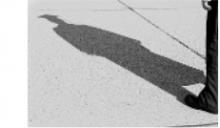 PhD defense of Valeria Italia on 12/14/21
PhD defense of Valeria Italia on 12/14/21


PhD defense of Valeria Italia from TIMC SyNaBi on december, the 14th at 2pm:
« Understanding novel protein-derived biopolymers to enable biomimetic devices »
-
Place: (limited access) room R218, laboratoire TIMC, Allée des Alpes, Domaine de la Merci, La Tronche
-
Broadcast on https://univ-grenoble-alpes-fr.zoom.us/j/98014610040?pwd=Z2F2bCthNkdnWDY4bzNlcm0xQlBMZz09 ID : 980 1461 0040 Code : 778044
 Thesis supervision :
Thesis supervision :
- Donald MARTIN, Professor, Université Grenoble Alpes, Director
- Marco MACCARINI, Researcher, CNRS, Co-director
- Kenith MEISSNER, Professor, Swansea University, Co-director
 Jury :
Jury :
- Donald MARTIN, Professor, Université Grenoble Alpes, Director
- Judith PETERS, Professor, Université Grenoble Alpe, Examiner
- Francesca BALDELLI BOMBELLI, Professor, Politecnico di Milano, Reporter
- Sophie SCHIRMER, Professor, Swansea University, Examiner
- Richard CAMPBELL, Senior lecturer, University of Manchester, Reporter
- My HEDHAMMAR, Professor, KTH Royal Institute of Technology, Examiner
 Key words:
Key words:
biopolymers, self-assembly, biomimetic
 Abstract:
Abstract:
Protein-based materials are currently the subject of intense research interest since they have an extended range of potential applications, such as improved bio-membrane biocompatibility for implanted medical devices and the creation of platform materials for novel biosensors. Monomers from Ultrabithorax (Ubx) transcription factor are known to spontaneously self-assemble at an air-water interface to form a monolayer, which has then been used as a basis for forming biopolymeric fibers. In the present work we use a Ubx fusion with Enhanced Green Fluorescent Protein (EGFP) to investigate the mechanisms of Ubx film formation, particularly during early stages of Ubx monomer aggregation at the air-water interface. Fusion of EGFP does not affect the ability of Ubx to self-assemble. However, we discovered this fusion plays an important role in the film-formation dynamics. In fact, Ubx monomers precipitate in water and, presumably due to the positive charges (predicted net charge of +11), they explode without any counter ions. The negative charges present in EGFP prevent the explosion of Ubx monomers. Following previous work on other types of protein films, critical parameters for this aggregation include the concentration of the Ubx protein and the solution in which the protein is suspended. The composition of the solution impacts the formation of the surface film of Ubx monomers and hence the properties of resulting monolayer biopolymeric membrane. Indeed, the monomer must have a determined configuration in order to aggregate. Moreover, the monomers must be at the air-water interface in order to aggregate with other monomers. Hence, conditions that promote aggregation at the surface of the water are required. Our hypothesis is that the waiting time for aggregation is an essential parameter to control to achieve an ordered structure of the biopolymeric membrane. That is, the monomers need time to change conformation, rise to the surface, then begin to aggregate and order themselves. We used the Langmuir-Blodgett (LB) technique, Brewster angle microscopy (BAM), ellipsometry and neutron reflectometry (NR) to investigate Ubx monomer aggregation and formation of the biopolymeric. Our experiments indicated that the waiting time between the introduction of Ubx monomers and the LB barrier compression was an additional critical parameter in formation of biopolymeric membranes. Moreover, we developed a new image analysis technique based on autocorrelation of Scanning Electron Microscopy (SEM) images of the biopolymeric membranes. This autocorrelation technique is applicable to any digital image, and in our experiments was used to quantify the linear structure of the Ubx biopolymeric membranes.
